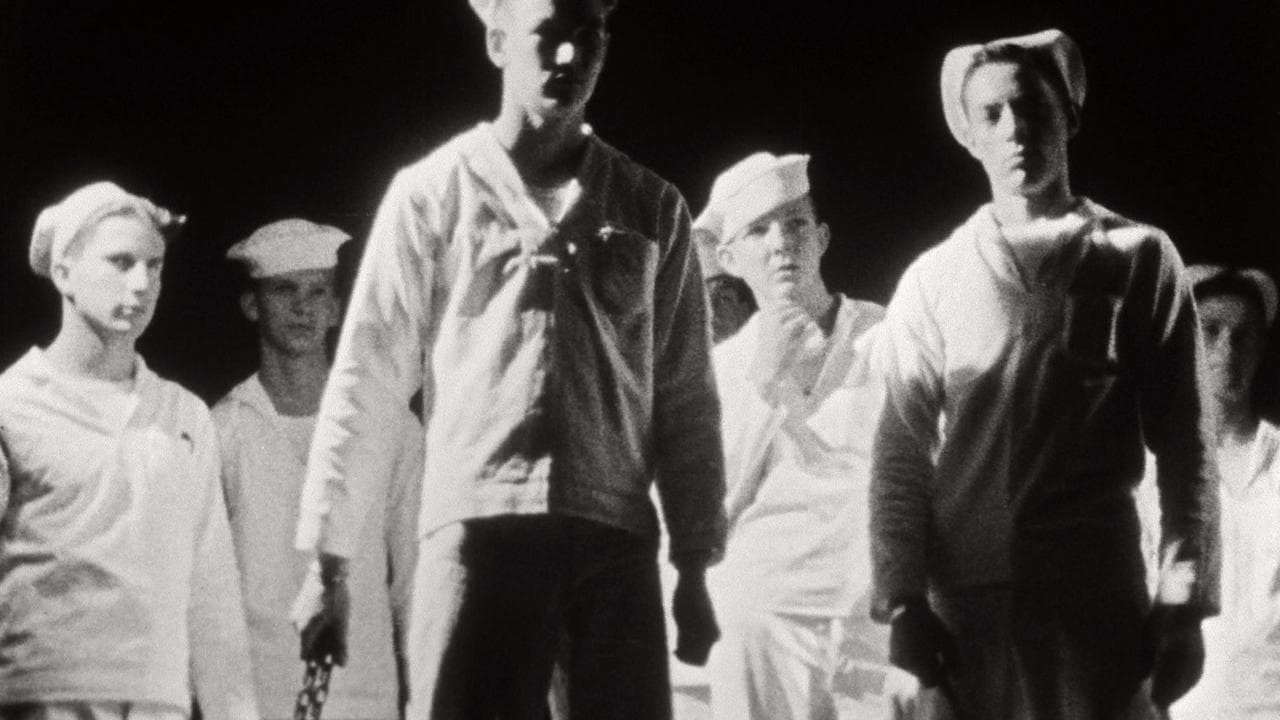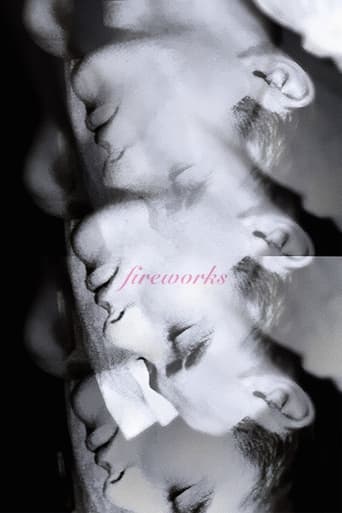

the leading man is my tpye
... View MoreLoad of rubbish!!
... View MoreI enjoyed watching this film and would recommend other to give it a try , (as I am) but this movie, although enjoyable to watch due to the better than average acting fails to add anything new to its storyline that is all too familiar to these types of movies.
... View MoreIt's a good bad... and worth a popcorn matinée. While it's easy to lament what could have been...
... View More"Fireworks" is a 1947 short film by Kenneth Anger and there seem to be several versions of it. The one I watched is maybe the shortest and ran for 13 minutes. Anger was 19 when he made this one and yet he already shot 5 or 6 films before it. This shows you how early he started. Still there are some differences here compared with his later work. For example, it's a rare occurrence that he acts in his own movies or that he uses black-and-white, especially because color has always been a defining element in his works. But this was shortly after World War II and the director was probably still finding his future path. What is most interesting about this film is maybe that it's possibly Anger's most violent and disturbing work. And because he acts in it, it also shows that it's a very personal film that puts a lot of focus on the protagonist's (and filmmaker's) homosexuality. However, the story is simply not interesting enough to let me recommend it. It's atmospheric yes, the music fits nicely, but the action just is too little to keep me interested even for such a short runtime. Not recommended.
... View MoreQuite a remarkable debut film from a 17 year old Kenneth Anger, this is a coming-of-age piece recreating a dream he had: the film explores homosexual attraction, submission and sadomasochistic violence. A young man (Anger himself) wakes up from a dream about being saved by a sailor in a large room of objects: among other thing, several photographs of a sailor carrying an unconscious man who could be Anger's character himself, a hand with its middle finger amputated, a clay figurine. He dresses and goes out into the night; at a bar, he picks up a sailor who struts and poses for the enthralled youngster. The sailor beats up our man who then goes back outside but is accosted by a group of sailors who strip him, gang-rape him and thrash him with chains. The scenes of violence are extreme and painful to watch but are skilfully done so that the viewer imagines the worst being done to Anger's character, not actually see any torture or punishment.The 14-minute film appears to be ambivalent about celebrating gay sexuality: Anger's character experiences liberation but it looks extremely degrading and you wonder how much suffering he undergoes is necessary. Sure, scenes at the end of the film suggest the youngster is fulfilled – the photographs can be disposed of, the hand is mended and the visual narrative hints at an important rite of passage being completed – but all the same, you feel the young man will keep going back for more of the same punishment. Still, the depiction of raw sexual attraction, willing submission, violence and pain leading to transformation and fulfillment is very powerful, even beautiful at times, especially as it's coming from a very young film-maker. There is humour both bawdy and witty, particularly in scenes featuring the pouring of milk over the young man (hint, hint) and some fireworks being set off from an unusual launch-pad! The piece looks conventional enough and Anger hadn't yet learned how to layer images one over the other and edit shots to enhance the narrative and bring the film to a climax. Instead the orchestral music score, sounding very typical melodramatic Hollywood of the period (1940s), is put to work creating the appropriate moods, ratcheting up tension, bringing suspense and celebrating the protagonist's sexual awakening. Though there are a couple of scenes where the joins in the musical soundtrack are awkward, overall the marriage of music to plot and mood is well done. Close-ups at critical points in the film, taking place during the rape and torture scene, bring out the protagonist's pain and the brutality of sailors beating him with chains as he suffers without protest. There's a little bit of a religious element here: the young man is Christ-like in his willingness to suffer and the pouring of milk over his body could be construed as a resurrection.Even at this early stage of his career, Anger was demonstrating a unique vision and a style of filming quite unlike what his film-director contemporaries were making. Sound is completely unnecessary: the protagonist is never named and so he might be considered representative of all young sexual novices who must undergo necessary ordeals to become fully adult and sexually aware.
... View MoreThis film has a dozen images in it that will stay tucked away in your head long after you can remember why exactly they're clawing at you. I guess the most interesting aspect from watching this film is how I was constantly repeating to myself, "This was made in 1947?".It is hard to believe that a film so overtly homo-erotic could find such a large audience at that time. That alone speaks to the overall impact the images from this film have on the viewer. Almost equally as amazing is that Anger was only 17 when he made this film. That's very brave, but strictly as a movie, it really didn't do much for me. Sometimes surrealistic images and their meaning can be lost on me, though there's quite a lot of this movie that is unmistakably "on the nose".I'm not sure quite what to make of it, but I hope that Anger worked out whatever it was he was going through at that time.
... View MoreIn Kenneth Anger's first masterpiece, "Fireworks" chronicles the senseless irony of homosexuality and violence as well as the longing for love. Here we see depicted as the plot even calls, "the very rape and torture of Anger himself", and Anger here being metaphor to describe all feelings related to love-leading to anger. For some, it would be considered 'wrong' or 'stupdi' but to others who understand the masterpiece clearly understand the beauty of underground cinema. This is one of these films to prove how brilliant avant-garde Anger truly is. In two thousand years, people will find this film, appreciate, love it, and embrace the darkness of one man (and legacy's) soul for many years to come.
... View More